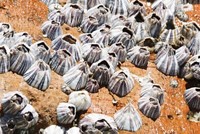Advertisement
Grab your lab coat. Let's get started
Welcome!
Welcome!
Create an account below to get 6 C&EN articles per month, receive newsletters and more - all free.
It seems this is your first time logging in online. Please enter the following information to continue.
As an ACS member you automatically get access to this site. All we need is few more details to create your reading experience.
Not you? Sign in with a different account.
Not you? Sign in with a different account.
ERROR 1
ERROR 1
ERROR 2
ERROR 2
ERROR 2
ERROR 2
ERROR 2
Password and Confirm password must match.
If you have an ACS member number, please enter it here so we can link this account to your membership. (optional)
ERROR 2
ACS values your privacy. By submitting your information, you are gaining access to C&EN and subscribing to our weekly newsletter. We use the information you provide to make your reading experience better, and we will never sell your data to third party members.
Synthesis
Drying Paint Delivers A Silver Bullet
January 28, 2008
| A version of this story appeared in
Volume 86, Issue 4
About the simplest method one could imagine for endowing oil-based house paint with antibacterial properties-adding some reagents and watching the paint dry-has been developed by researchers at the City College of New York and Rice University (Nat. Mater., DOI: 10.1038/nmat2099). Unsaturated hydrocarbons in vegetable oil paints dry by an autooxidative, free-radical cross-linking reaction. CCNY's George John and coworkers conceived of chemistry that rides piggyback on free radicals. They add a silver salt to an alkyd paint, and as the painted surface dries, free radicals reduce the silver ions, forming antibacterial silver nanoparticles. In this green chemistry technique, "we are using a natural process to make nanoparticles in situ, without any additional solvents or energy," John notes. The coatings show antibacterial activity toward Escherichia coli and Staphylococcus aureus bacteria. Although antibacterial silver nanoparticle paints are commercially available, the new approach "uses natural materials and is quite simple," comments Michigan State University chemist Merlin L. Bruening.





Join the conversation
Contact the reporter
Submit a Letter to the Editor for publication
Engage with us on Twitter